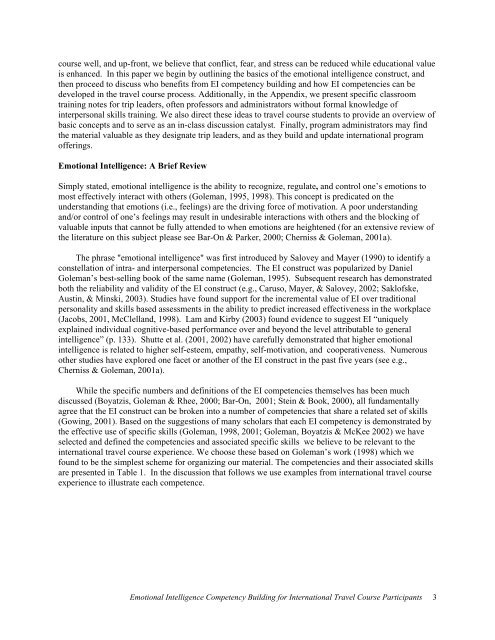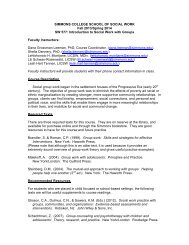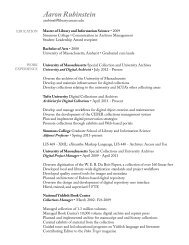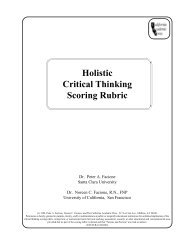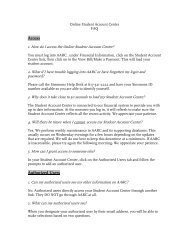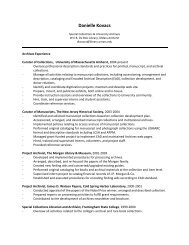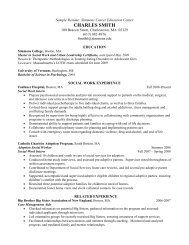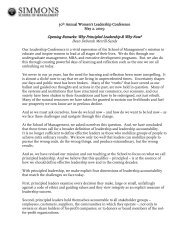Incorporating Emotional Intelligence into the Preparation and ...
Incorporating Emotional Intelligence into the Preparation and ...
Incorporating Emotional Intelligence into the Preparation and ...
You also want an ePaper? Increase the reach of your titles
YUMPU automatically turns print PDFs into web optimized ePapers that Google loves.
course well, <strong>and</strong> up-front, we believe that conflict, fear, <strong>and</strong> stress can be reduced while educational valueis enhanced. In this paper we begin by outlining <strong>the</strong> basics of <strong>the</strong> emotional intelligence construct, <strong>and</strong><strong>the</strong>n proceed to discuss who benefits from EI competency building <strong>and</strong> how EI competencies can bedeveloped in <strong>the</strong> travel course process. Additionally, in <strong>the</strong> Appendix, we present specific classroomtraining notes for trip leaders, often professors <strong>and</strong> administrators without formal knowledge ofinterpersonal skills training. We also direct <strong>the</strong>se ideas to travel course students to provide an overview ofbasic concepts <strong>and</strong> to serve as an in-class discussion catalyst. Finally, program administrators may find<strong>the</strong> material valuable as <strong>the</strong>y designate trip leaders, <strong>and</strong> as <strong>the</strong>y build <strong>and</strong> update international programofferings.<strong>Emotional</strong> <strong>Intelligence</strong>: A Brief ReviewSimply stated, emotional intelligence is <strong>the</strong> ability to recognize, regulate, <strong>and</strong> control one’s emotions tomost effectively interact with o<strong>the</strong>rs (Goleman, 1995, 1998). This concept is predicated on <strong>the</strong>underst<strong>and</strong>ing that emotions (i.e., feelings) are <strong>the</strong> driving force of motivation. A poor underst<strong>and</strong>ing<strong>and</strong>/or control of one’s feelings may result in undesirable interactions with o<strong>the</strong>rs <strong>and</strong> <strong>the</strong> blocking ofvaluable inputs that cannot be fully attended to when emotions are heightened (for an extensive review of<strong>the</strong> literature on this subject please see Bar-On & Parker, 2000; Cherniss & Goleman, 2001a).The phrase "emotional intelligence" was first introduced by Salovey <strong>and</strong> Mayer (1990) to identify aconstellation of intra- <strong>and</strong> interpersonal competencies. The EI construct was popularized by DanielGoleman’s best-selling book of <strong>the</strong> same name (Goleman, 1995). Subsequent research has demonstratedboth <strong>the</strong> reliability <strong>and</strong> validity of <strong>the</strong> EI construct (e.g., Caruso, Mayer, & Salovey, 2002; Saklofske,Austin, & Minski, 2003). Studies have found support for <strong>the</strong> incremental value of EI over traditionalpersonality <strong>and</strong> skills based assessments in <strong>the</strong> ability to predict increased effectiveness in <strong>the</strong> workplace(Jacobs, 2001, McClell<strong>and</strong>, 1998). Lam <strong>and</strong> Kirby (2003) found evidence to suggest EI “uniquelyexplained individual cognitive-based performance over <strong>and</strong> beyond <strong>the</strong> level attributable to generalintelligence” (p. 133). Shutte et al. (2001, 2002) have carefully demonstrated that higher emotionalintelligence is related to higher self-esteem, empathy, self-motivation, <strong>and</strong> cooperativeness. Numerouso<strong>the</strong>r studies have explored one facet or ano<strong>the</strong>r of <strong>the</strong> EI construct in <strong>the</strong> past five years (see e.g.,Cherniss & Goleman, 2001a).While <strong>the</strong> specific numbers <strong>and</strong> definitions of <strong>the</strong> EI competencies <strong>the</strong>mselves has been muchdiscussed (Boyatzis, Goleman & Rhee, 2000; Bar-On, 2001; Stein & Book, 2000), all fundamentallyagree that <strong>the</strong> EI construct can be broken <strong>into</strong> a number of competencies that share a related set of skills(Gowing, 2001). Based on <strong>the</strong> suggestions of many scholars that each EI competency is demonstrated by<strong>the</strong> effective use of specific skills (Goleman, 1998, 2001; Goleman, Boyatzis & McKee 2002) we haveselected <strong>and</strong> defined <strong>the</strong> competencies <strong>and</strong> associated specific skills we believe to be relevant to <strong>the</strong>international travel course experience. We choose <strong>the</strong>se based on Goleman’s work (1998) which wefound to be <strong>the</strong> simplest scheme for organizing our material. The competencies <strong>and</strong> <strong>the</strong>ir associated skillsare presented in Table 1. In <strong>the</strong> discussion that follows we use examples from international travel courseexperience to illustrate each competence.<strong>Emotional</strong> <strong>Intelligence</strong> Competency Building for International Travel Course Participants 3


